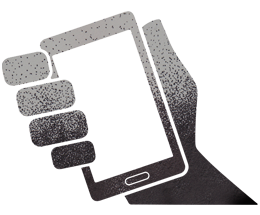Enviar un Mensaje
Información de Contacto
Dirección:
Iternatura comunicación
C/ Hurtado, 30 entlo. 2ª
08022 Barcelona
C/ Aigua, 5
17800 Olot
C/ Hurtado, 30 entlo. 2ª
08022 Barcelona
C/ Aigua, 5
17800 Olot
FOR ITERNATURA, TOURISM IS ESSENTIALLY, AN ACT OF COMMUNICATION BETWEEN A REGION OR AREA, A SPACE, A HERITAGE AND THOSE THAT VISIT THEM.
These are the components for designing tourist spaces, which has changed over time according to the techniques used to build them. Furthermore, the advent of new technologies brings new ways of interacting with our environment, such as constant connection to sources of information, geolocation and augmented reality.
These technologies are reshaping tourist spaces and therefore making new capacities for experience and meaning possible in order to understand, interpret, discover and relate to our environment.
These tools allow us to design unprecedented spaces (place + communication) of cultural (and leisure) experiences that are structured around new narratives by highlighting emerging heritages and opening up a field for exploring and building.
In this context, we could say that communication obeys new laws and that participation and networks have acquired an extraordinary role. We must take that into account to meet the challenge and use other ways of communicating and interacting.
Our approach is based on transmedia storytelling, a technique to convey and relate an experience across multiple platforms and formats used in current digital technology. In other words, we employ various new tools of communication (Internet, apps, etc.), using storytelling and games as tools to get users involved and provoke or encourage their participation. From the standpoint of production, this means creating content that involves the audience by using techniques that enrich their tourist experience.
Tourist destinations are the heart and soul of the tourist experience and can give it structure. The goal is to make the story or narrative the backbone of the trip so tourists can dream about and fall in love with a destination. With digital technology, we can make the tourist experience better and richer. The combination of both gives us a powerful and innovative tool to highlight a place, bestowing it with a spirit or genius loci, or transmedia storytelling in modern terms.
In a transmedia universe, every story becomes a tourist product, structuring media over the region or area like a game board in which the visitor actively plays the starring role.
Iternatura doesn’t just apply technology, but also energises the tourist destination around it. To do so, it establishes relations between visitors and the range of commercial goods and services at the destination. This requires establishing and spreading geobranding, place branding or destination marketing, i.e., communicating the image of a region or area to a target market.
All this helps to protect and promote diversity and goods and services with less capital and less ability to advertise on conventional media. We understand the concept as a comprehensive service and as a smart idea for sustainable local growth.

Culture as the backbone of the range of goods and services, preserving and spreading information about the place’s symbols of identity.
Visitors and inhabitants should not only co-exist in harmony, but also in synergy, creating camaraderie between both groups.
This places the geolocation of small business, another piece in the game’s dynamics, within the tourist’s reach.
This puts the destination’s potential resources to use, meeting the need to divert congestion towards new spaces of tourist use.
New communication channels, with the possibility of linking them to social networks as a form of promotion and entry.
Tourists become travellers or explorers, the star of their own experience.
Marketing of quality content to enrich, facilitate, increase and renew the traveller’s experience.
That work in the same direction, like the range of local goods and services, interpretation centres, museums and more.
By collecting big and small data. Millennial consumers are characterised by “invisible” behaviour in their dealings with the destination, but expect to maintain a hyper-connected experience and everything related to expressing the feelings they capture. It is consistent with the new ways of travelling.
According to the definition of academic Henry Jenkins, transmedia storytelling is a communication technique by which a story is related through various media and platforms (a book, a comic book, a post, a spot, a TV series, a film or a videogame). The aim is to create a unified and coordinated entertainment experience and thus get some of the spectators to take an interactive role as they follow the story.
We at Iternatura extend this entertainment experience to the tourist sector, the sector of active spectators, because we think it could be a good fit. Besides, the possibility of designing new spaces for tourists to experience becomes extraordinarily richer using the principles of transmedia narratives.
Using transmedia narratives means creating content that gets an audience involved by using various techniques to soak up their daily leisure time. In the tourist sector, taking the story as the vector of the visit, that content via the various different technologies available allow us to take charge of the entire tourist selling cycle: from the moment the decision is made to promotion, marketing and completion.
The narratives and interactions between the space and the visitor mark satisfaction with the experience, especially in urban and cultural tourism. In fact, we could say that the tourist space is any public space that has narratives to share with its visitors. These spaces have been designed over time, with the technologies available throughout. As such, part of their success lies in the ability to transfer the right narrative messages to the physical space with a purpose: to generate engagement.
The emergence of new technologies, and especially mobile technologies, is reshaping the tourist space and gives us new design options. Augmented reality, combined with IRL (in real life), storytelling, gamification and social networks are all tools for fascinating tourists, just as the obelisks did in the streets of Ancient Rome.
Furthermore, tourists are becoming increasingly demanding, seeking out more customised tourist products and smart services that provide them with individualised high-quality information at any time, in any place and in real time. This is especially true of digital natives, who demand of the tourist space what they see in their devices.
These devices take us from the symbolic to the virtual, from the liturgy to the experience. Not all tourists are the same, nor do all desire the same intensity of information and knowledge. Technology allows us to adapt to each style of visitor by incorporating stories, games, rigour and anecdotes, all based on demand. Therefore, we understand that technology contributes greatly as a tool for designing experience and interactivity. The successful design of new tourist spaces will surely not come from replacing one way of doing things with another, but from co-existence and the mixing of all ways of doing things.

The cultural inheritance of a community’s past, maintained and passed down to current and future generations.

The art of telling a story. The creation and use of an atmosphere generated by a story.

The use of game, thought and mechanical design elements to engage people in different contexts.

The ability to find one’s location and geographic relations with other objects by means of a mobile device.

Provides the means for people to use mobile devices and augmented and virtual reality to record information about their activity and integrate the data directly.
Arquitecto por la ETSAB-UPC de Barcelona y diplomado en Marketing Turístico. Ha desarrollado su trayectoria profesional en los ámbitos de la planificación territorial, la consultoría internacional y la estratégia turística, y se ha especializado en innovación,
infraestructuras e infoestructuras turísticas.

Entendemos el turismo como un fenómeno comunicativo entre un espacio o territorio y sus visitantes. Especialmente en el turismo urbano y cultural, las narrativas y las interacciones posibles entre el espacio y el visitante marcan la satisfacción de la experiència
Consultora de Comunicación. Licenciada en Ciencias Políticas y Sociología y posgraduada en Relaciones Institucionales y Marketing Público (UAB). Estudió en el Instituto de Estudios Políticos de París, Dirección Estratégica de la Comunicación en ESADE y en el año 2010 obtuvo el Diploma de Estudios Avanzados en la Facultad de Comunicación de la UPF.

Ahora son más relevantes que nunca las formas de comunicación y los canales, no solo para hacer llegar los mensajes, sino para influir de manera verdadera y decisiva en el cambio de usos